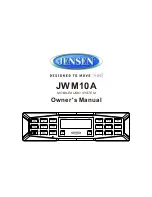
System Functions and Features as of I7.9
Features
443
sy
d-
020
0/3.
0
– I7.
9
– 1
1
.2009
8. 6. 26. 3
Active room monitoring
When activating room monitoring the user specifies whether the call connection
should be one-way (mode 1) or two-way (mode 2). One-way means that only the
transmission path of the monitoring phone is switched through; with a two-way
call connection the reception path is also switched through (in hands-free mode).
The duration of the call connection is limited to 1 minute.
As an option the user can specify the microphone’s noise sensitivity level for trig-
gering the call:
•
Level 1: low sensitivity (high noise level required)
•
Level 2: average sensitivity (average noise level required)
•
Level 3: high sensitivity (low noise level required)
If no level is indicated, the value last selected is used.
The appropriate level has to be determined empirically on site.
The microphone used for room monitoring is switched on with a 10 second time
lag. The time lag allows the user to position the handset and then leave the room.
Triggering the call
If a noise exceeds the configured level for more than 2 seconds, a call is immedi-
ately triggered to the destination user.
•
If the destination user is busy, the room monitoring microphone is re-activated
after a 15 s delay.
•
If the destination user still does not answer, the call is terminated and the room
monitoring microphone is reactivated after a delay of 1 minute.
Notes:
– In both cases after the unsuccessful call the configured level has to be
exceeded again for a call to be triggered.
– An ATAS alarm is also generated in addition to the call triggering. Use
of the protocol is subject to
ATAS Interface
and
ATASpro Interface
licences.
















































